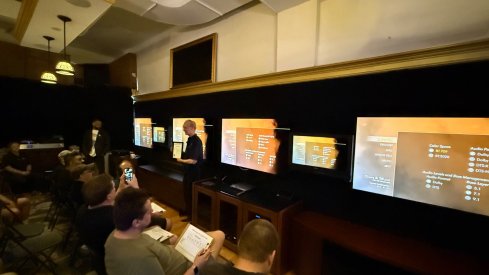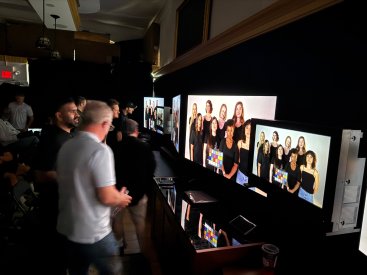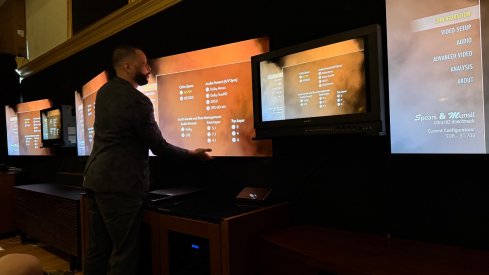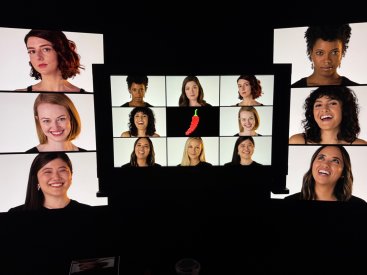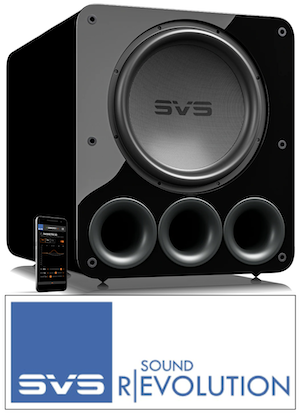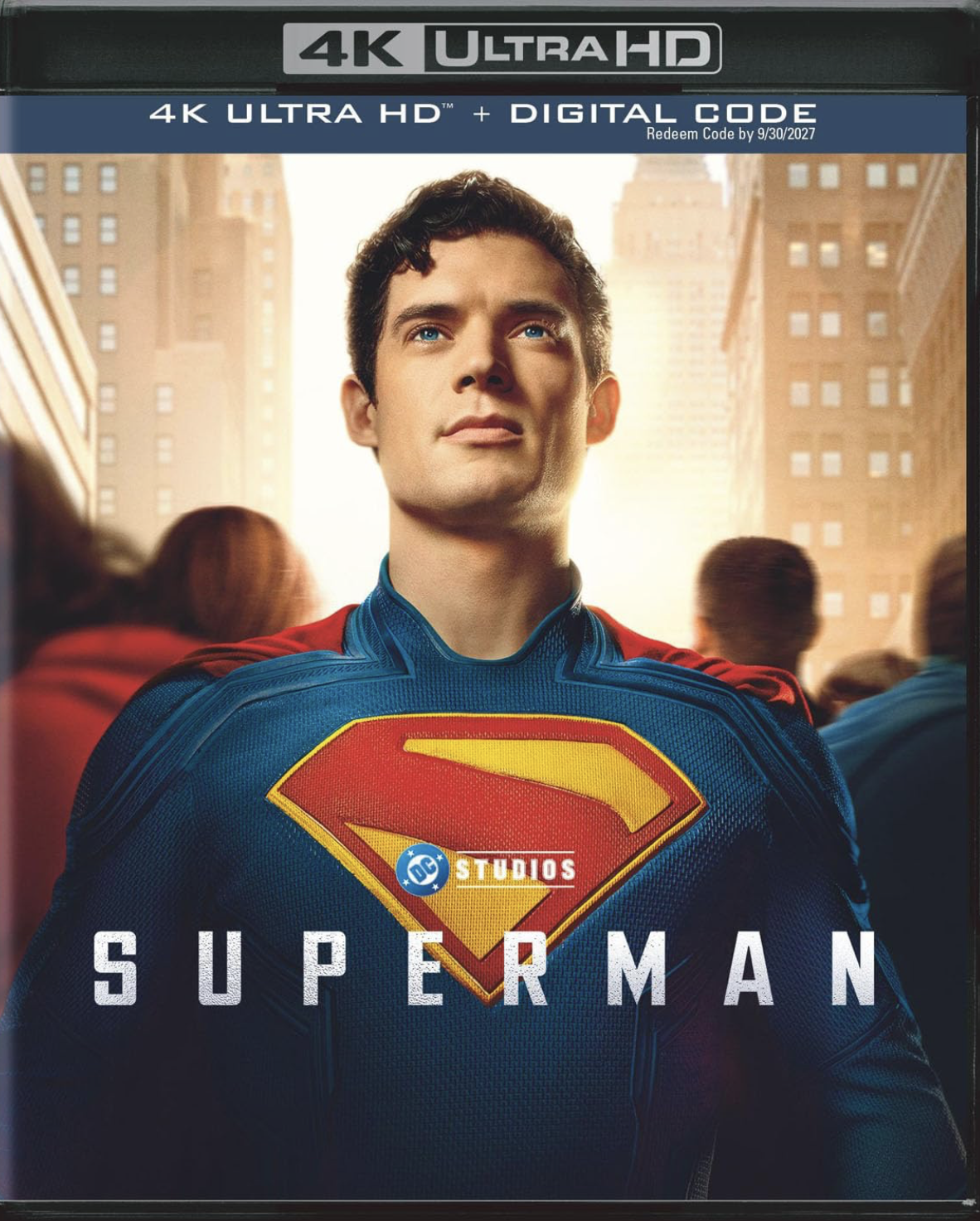(July 18, 2025) 2025’s Value Electronic's TV Shootout is sticking to its roots, once again taking place in the friendly confines of Robert and Wendy Zohn’s high-end showroom in Scarsdale, New York. Now in its third decade, the respected industry event has become a marquee moment on the AV calendar, bringing together the biggest names in TV manufacturing for a subjective head-to-head evaluation of premium models available in the U.S. market.
This year’s competition is set for Saturday, July 26, and will showcase flagship OLED TVs from LG, Panasonic, Samsung, and Sony. All will be assessed for key picture quality attributes using professional test patterns and real-world content. Categories under evaluation include contrast, color fidelity, saturation, and motion resolution. Sony Professional’s BVM-HX3110 mastering monitor will serve as the studio reference point, with content delivered through Magnetar’s UDP-900 4K universal player and Kaleidescape’s Strato V player.
As always, the winner will be crowned "King of TV," a title that continues to carry weight among enthusiasts and industry professionals alike.
Meet the TVs
Unlike previous events, this year’s contest features an all-OLED lineup, acknowledging OLED’s consistent and unrelenting superiority in key performance aspects compared to LCD-based technologies. It also features 65-inch models only, ditching a second round of evaluations focused on the largest screen sizes offered by each manufacturer.
Here’s a look at the TVs included in the event:
Sony’s K65XR80M2 BRAVIA 8 II OLED TV
Standing as Sony's top QD-OLED model for 2025, the BRAVIA 8 II OLED is positioned just below the flagship BRAVIA 9 QLED and above the carryover BRAVIA 8 from 2024. It replaces last year’s winner, the A95L, and features the same next-gen QD-OLED panel found in Samsung’s top-rung S95F, promising excellent black levels, richer colors, and increased brightness thanks to improved panel efficiency. Available in 55-inch and 65-inch sizes, the BRAVIA 8 II targets premium OLED buyers, with the 65-inch model priced around $3,298. The panel is paired with Sony’s updated XR Cognitive Processor, which adds new AI-based content detection to automatically tune picture performance based on what you're watching, be it sports, movies, or general TV content.
The TV supports 4K at 120Hz, VRR, ALLM, and includes dual HDMI 2.1 ports for modern gaming needs. AV compatibility is broad, with support for Dolby Vision, Dolby Atmos, and DTS passthrough. A standout feature is S-Center input, which allows the screen’s internal speakers to act as the center channel when paired with compatible Sony soundbars. That’s backed by Acoustic Surface Audio+, Sony’s unique approach to using the panel itself as a sound source. Running Google TV OS version 12, the BRAVIA 8 II offers robust streaming support, voice control through Google Assistant, and integration with Sony’s Bravia Core streaming service.
Samsung’s QN65S95F OLED TV
Samsung’s QN65S95F stands at the top of its 2025 4K OLED lineup, succeeding last year’s S95D and positioned above the more affordable S90F. Like the Sony Bravia 8 II, it uses an updated QD-OLED panel, which Samsung says is around 30% more efficient than before. This translates to improved energy performance and higher overall brightness, making it well-suited for HDR viewing and daytime use. The panel also continues to feature a version of Samsung’s matte anti-reflective coating, which helps cut down on ambient glare while maintaining contrast and black levels. Inside, the TV is powered by the NQ4 AI Gen3 processor, which handles video processing, AI upscaling, and smart functions.
Running on the latest version of Samsung’s Tizen OS, the S95F offers a redesigned user interface and broad app support. Its gaming capabilities are robust, with support for 4K at 144Hz, VRR, ALLM, and HDMI 2.1 across all four ports. For audio, it includes a 70-watt, 4.2.2-channel speaker system and is compatible with Dolby Atmos, although Samsung continues to forgo Dolby Vision and DTS support, a decision that may matter for home theater purists. The TV is available in 55-, 65-, 77-, and 83-inch sizes, with the 65-inch model priced around $3,299 at launch.
LG’s OLED65G5WUA OLED TV
The LG OLED65G5WUA, part of LG’s 2025 G5 Series, introduces a new generation of panel technology with the debut of the Primary RGB Tandem WOLED panel. This next-gen design stacks four OLED layers, said to achieve higher peak brightness and expanded color volume, directly addressing the color performance gap with QD-OLED competitors. The G5 is available in 55-inch, 65-inch, 77-inch, 83-inch, and 97-inch sizes, though the 97-inch version lacks the new panel tech defaulting to a WOLED screen. The 65-inch model sells for around $2,999 to $3,399, placing it firmly in the premium OLED category.
Under the hood, the G5 is powered by the Alpha 11 AI Processor Gen 2, which supports advanced upscaling, AI-enhanced picture tuning, and real-time tone mapping. Gamers will find a full slate of features, including four HDMI 2.1 ports, 4K at up to 165Hz, VRR, and ALLM, along with LG’s customizable Game Optimizer interface. The TV supports Dolby Vision, HDR10, and HLG, though not HDR10+, and it runs the 2025 version of webOS, which introduces a redesigned UI and more personalized content recommendations. With cutting-edge display hardware, robust gaming support, and a wide selection of screen sizes, the G5 represents LG’s most advanced OLED to date.
Panasonic 65Z95B OLED TV
After a lengthy absence, Panasonic officially returns to the US market with its 65Z95B OLED, the company’s flagship 2025 TV. Like the LG OLED65G5WUA, it’s built around LG Display’s new Primary RGB Tandem Panel, tho Panasonic says its custom cooling system helps sustain performance without increasing the risk of burn-in. The TV also features a 165Hz refresh rate. Available in a 65-inch size and priced between $3,099 and $3,399, the Z95B is designed to compete directly with other top-tier OLEDs from LG, Sony, and Samsung.
Beyond the panel, the Z95B stands out for its broad HDR format support, including Dolby Vision, HDR10+, HDR10, and HLG. It also includes Dolby Atmos audio via a Technics-tuned speaker system, and uses Panasonic’s HCX Pro AI Processor MK II for real-time content optimization through the 4K Remaster Engine. Gaming support includes VRR, ALLM, and Dolby Vision Gaming, though the set is limited to just two HDMI 2.1 ports. Smart features are powered by Amazon’s Fire TV platform, which brings Alexa voice control and a wide range of app support.
More on LG Display’s Primary RGB Tandem Technology
LG Display’s new 4th-generation WOLED panel, branded “Primary RGB Tandem,” marks a fundamental shift in OLED panel design. Unlike previous panels that relied on a three-layer emitter structure paired with a Micro Lens Array to boost brightness, this new approach uses four stacked emission layers: two blue layers, and one each of red and green. This architecture significantly increases the light output from the panel itself, allowing for higher peak brightness and improved color volume. According to LG Display, the new design enables peak white brightness of up to 4000 nits and color brightness of up to 2100 nits, a roughly 40% improvement in color luminance over the best MLA-equipped WOLED panels from previous generations.
MLA technology worked by applying a dense array of microscopic lenses to the surface of the OLED panel to redirect and concentrate emitted light toward the viewer. While effective, it added manufacturing complexity and didn’t directly address the inherent light output limitations of WOLED’s emissive stack. In contrast, the four-stack tandem approach produces more light at the source, reduces power consumption by around 20% (per LG), and eliminates the need for microlenses altogether. Additionally, the new panel structure brings improved DCI-P3 color coverage (from 98.5% to 99.5%), though it still falls short of the full RGB performance of QD-OLED panels due to the continued use of a white subpixel for brightness enhancement.
Who’s Judging the Event?
This year’s panel of expert judges includes Ilya Akiyoshi, Kenneth Almestica (Paramount Brand Creative), Todd Anderson (AV NIRVANA), Chris Boylan (eCoustics), Richard Drutman (Triode Pictures), Jason Dustal (madVR Labs), Jeffrey Hagerman, David Mackenzie (Fidelity in Motion), Cecil Meade (Classy Tech Calibrations), Nilay Patel (The Verge), John Reformato, and Mike Renna. Each brings years of experience in film production, tech journalism, engineering, and calibration to the judging table.
Behind the scenes, the TVs will be professionally calibrated by DeWayne Davis of Audio Video Fidelity, one of the industry’s most respected video calibration experts.
How Can you Experience the Event?
The 2025 TV Shootout will be webcast live with presentations from manufacturers, and post-event coverage will be hosted on YouTube channels such as StopTheFOMO and Brian’s Tech Therapy. We’ll also post the results in this thread and discuss the event on a future Home Theater News Review podcast. So make sure to follow along and see which model brings home the crown!
Related Reading:
- A Behind-the-Scenes Look at the Friendliest National Home Theater Retailer In the US: Value Electronics
- Value Electronics Crowns New Kings of 4K and 8K TVs at Its Annual Flatpanel Shootout Event!
- Value Electronics 2023 TV Shootout Evaluation event
- A Clean Sweep: JVC Wins Big at the 2022 Value Electronics Long Throw Shootout








